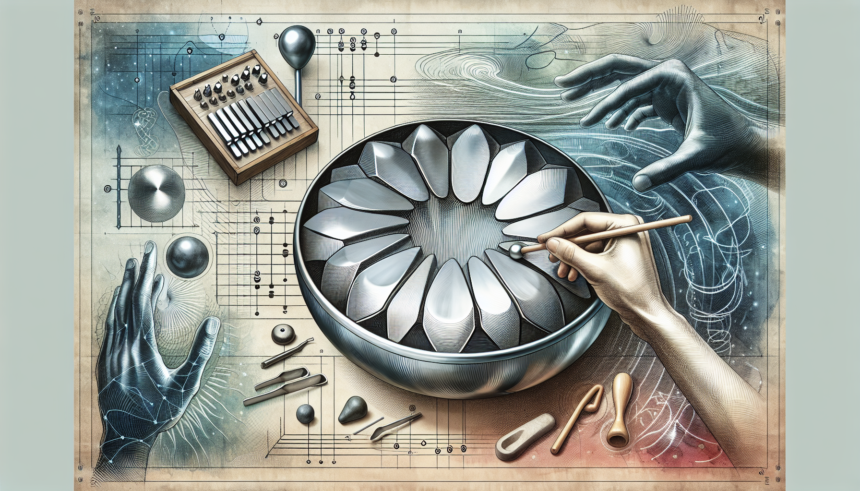Introduction
The handpan, an expressive and captivating instrument, has gained immense popularity since its introduction. Known for its soothing sound and unique design, maintaining its tune over time is vital to preserve its enchanting musical qualities. This article delves into techniques for maintaining handpan tuning over time to ensure your instrument continues to produce its harmonious sounds.
Understanding Handpan Tuning
Handpans are crafted meticulously, and each note field is tuned to specific frequencies. However, environmental factors, playing techniques, and even the instrument’s material can affect its tuning over time. A well-maintained handpan can retain its quality sound much longer, providing years of musical enjoyment.
Techniques for Maintaining Handpan Tuning
1. Proper Storage
One of the simplest ways to maintain handpan tuning is proper storage. Handpans should be kept in a stable environment, free from extreme temperature fluctuations. Prolonged exposure to high temperatures or humidity can cause the material to expand and contract, leading to detuning. Likewise, cold environments can make the metal brittle, increasing the likelihood of damage.
- Store your handpan at a consistent room temperature, ideally between 60-80°F (15-27°C).
- Avoid placing the handpan near heat sources like radiators or direct sunlight.
- Ensure the storage area is dry to prevent rust and other moisture-related issues.
2. Regular Cleaning
Dust, dirt, and oils from your hands can accumulate on the surface of your handpan, affecting its sound quality. Regular cleaning not only maintains its appearance but also helps preserve the original tuning. Use a soft cloth to gently wipe the surface after each playing session to remove any residue. For a deeper clean, use isopropyl alcohol or a specialized handpan cleaner recommended by the manufacturer.
- Avoid abrasive materials or harsh chemicals that can damage the surface.
- Be gentle when cleaning around the notes to avoid disturbing the tuning.
3. Proper Playing Techniques
Your playing technique significantly impacts the longevity of your handpan’s tuning. Striking the notes too hard or using improper techniques can cause the notes to detune faster. Here are some tips to ensure you’re playing in a way that preserves tuning:
- Use the pads of your fingers instead of your nails or other hard objects to strike the notes.
- Avoid excessive force when playing; a gentle touch often produces the most beautiful sound.
- Practice proper handpan ergonomics to distribute pressure evenly across the notes.
4. Regular Refinement
Even with the best care, handpans may occasionally require professional retuning. The frequency of this depends on how often you play and environmental factors. Engage a skilled tuner to assess and retune your handpan periodically. This is especially important if you notice any notes sounding off or if the harmonics are not as clear as they used to be.
- Consult the manufacturer or other reputable handpan tuners for routine maintenance.
- Keep a record of tuning sessions and the tuner’s recommendations for care and maintenance.
5. Transportation Tips
Transporting your handpan can pose risks to its tuning. Whether you’re taking it to a gig, a friend’s house, or on vacation, proper transportation is critical. Invest in a high-quality, padded handpan bag or case that offers ample protection. Secure the instrument within the case to prevent movement during transit.
- Avoid placing heavy objects on the handpan during transportation.
- Consider temperature and humidity changes when transporting your handpan over long distances.
6. Environmental Awareness
As previously mentioned, environmental factors significantly impact handpan tuning. Aside from proper storage, it’s essential to be aware of the conditions in which you play and store your instrument.
- If playing outdoors, avoid direct sunlight and choose a shaded area to reduce the risk of overheating.
- After playing outdoors, especially in humid or damp conditions, ensure your handpan is thoroughly dried before storage.
Conclusion
Maintaining the tuning of your handpan is a multifaceted task that requires attention to storage, cleaning, playing techniques, and regular professional maintenance. By adopting these techniques, you can significantly prolong the lifespan of your handpan’s optimal sound quality. Remember, the key to preserving your instrument’s harmonics lies in consistent care and being attuned to its needs.
Frequently Asked Questions
1. How often should I get my handpan retuned?
The frequency of retuning depends on how frequently you play and the environmental conditions it’s exposed to. Generally, every 1-2 years is recommended, but consult with a professional tuner for personalized advice.
2. Can I retune my handpan myself?
Retuning a handpan is a delicate process that requires specific skills and tools. It’s advisable to seek a professional tuner to avoid damaging the instrument.
3. What type of cleaning products should I use on my handpan?
Use a soft cloth and mild products such as isopropyl alcohol. Avoid abrasive materials or harsh chemicals that can damage the surface and affect the tuning.
4. How can I prevent my handpan from rusting?
Keep your handpan dry and store it in a controlled environment. Regularly clean it and consider applying a protective oil or wax to the surface, especially if you live in a humid area.
5. Are there any environmental factors that I should avoid?
Yes, avoid extreme temperatures, direct sunlight, and high humidity. These conditions can affect the metal of the handpan, leading to detuning and potential damage.





